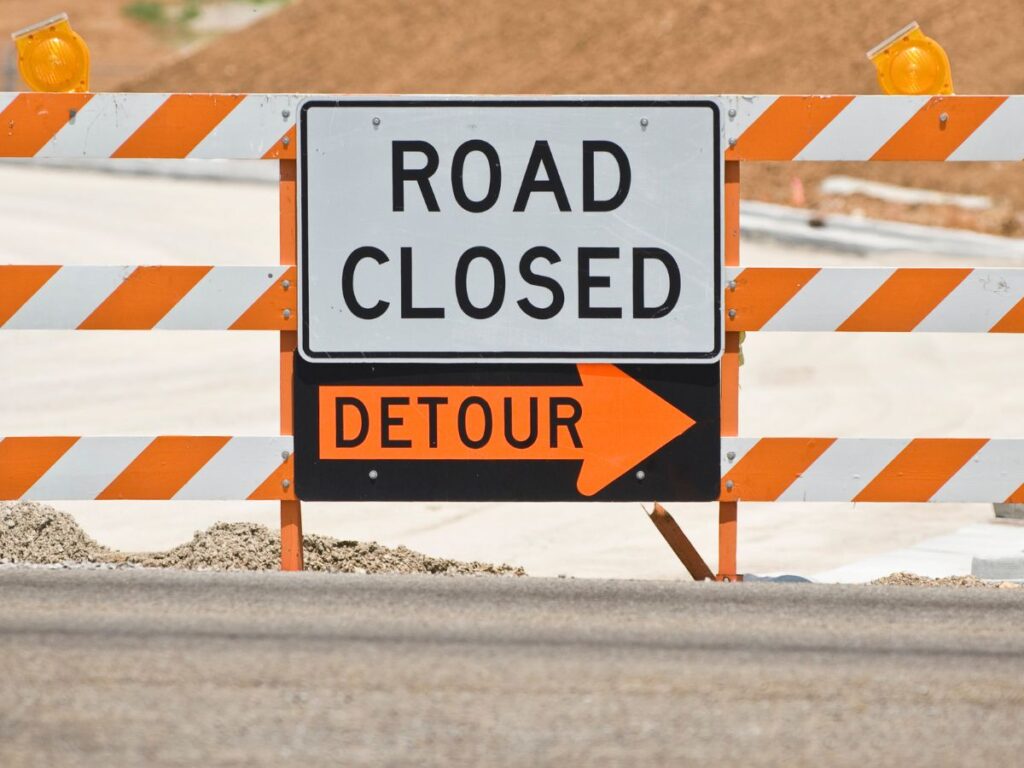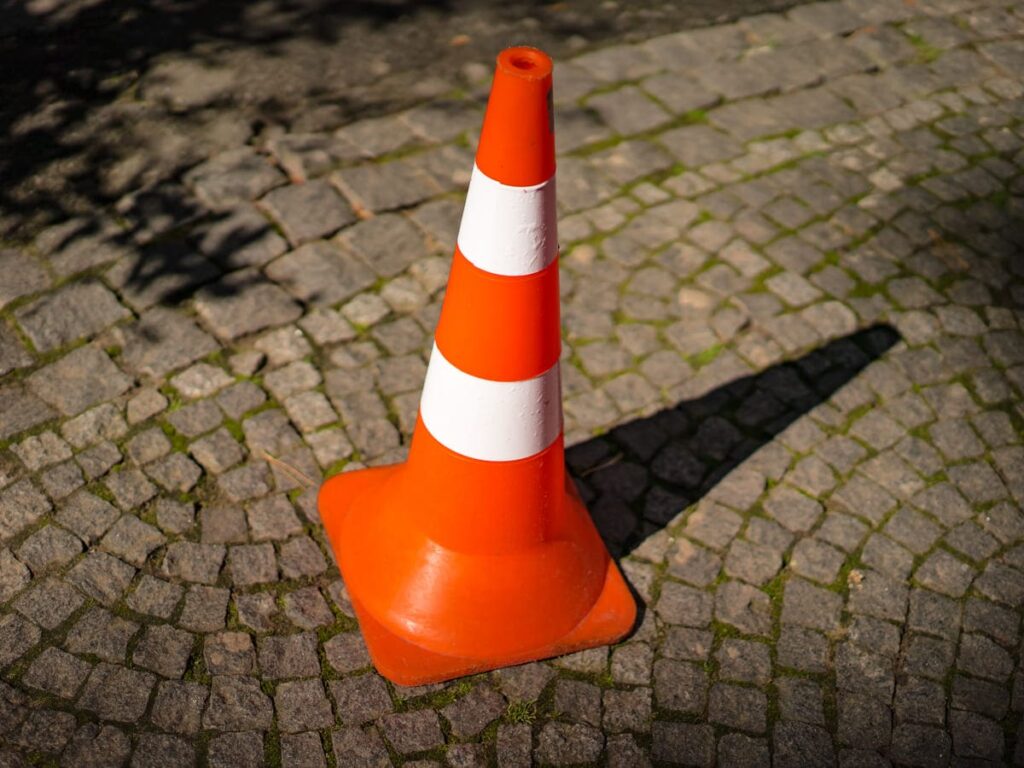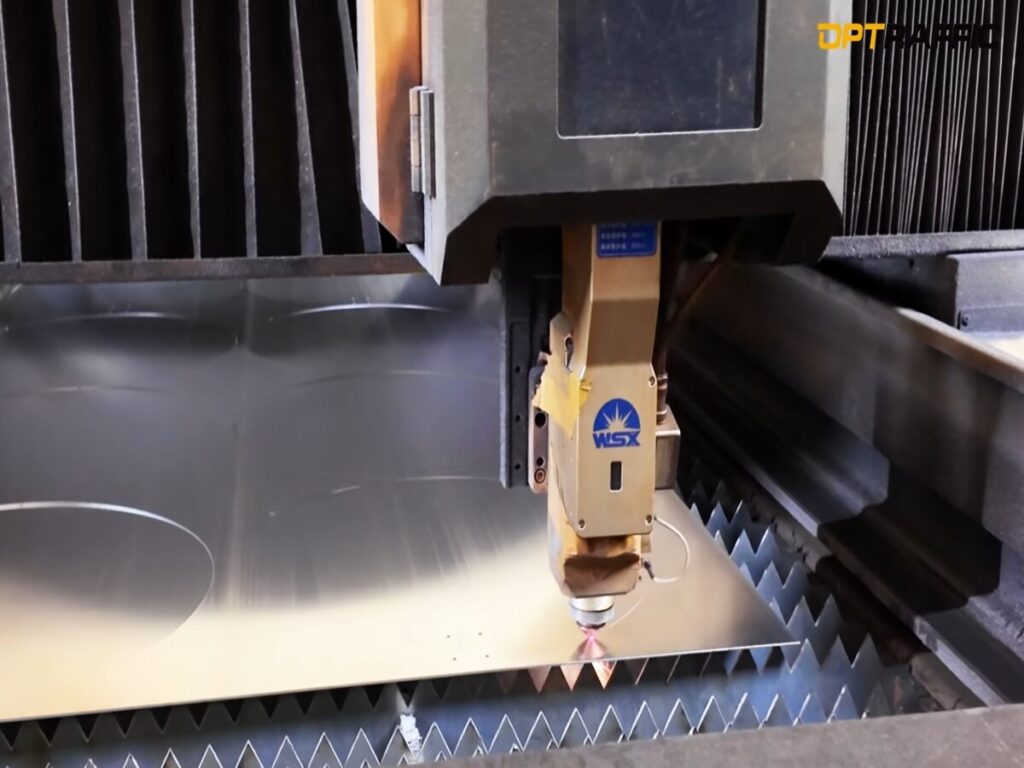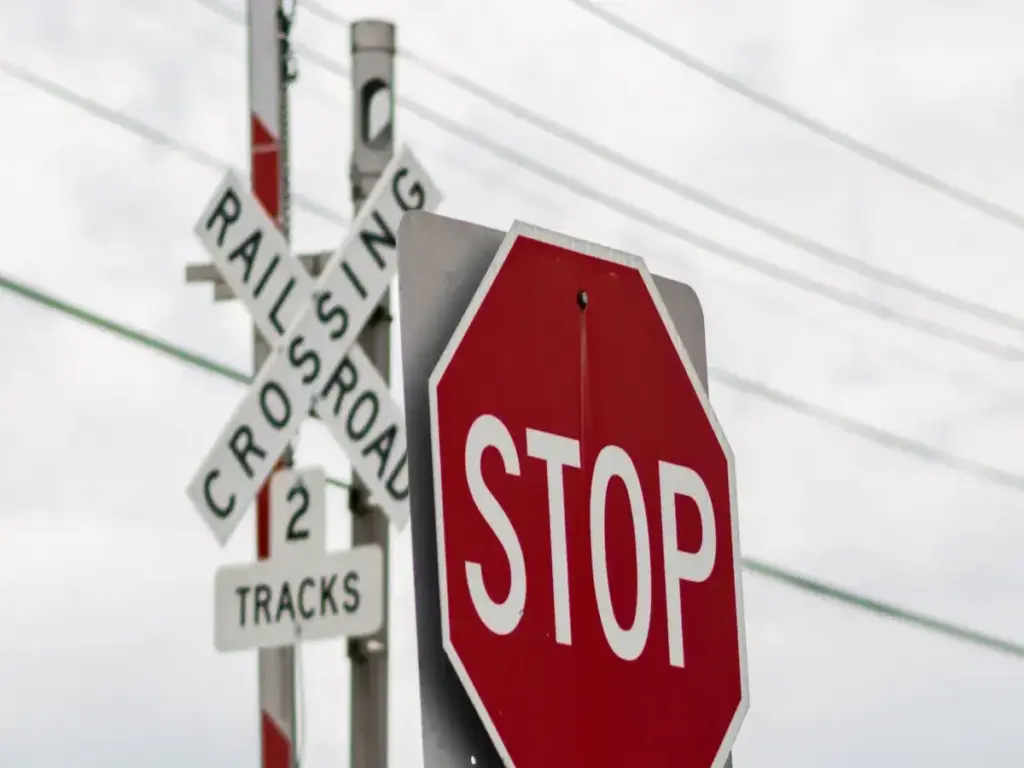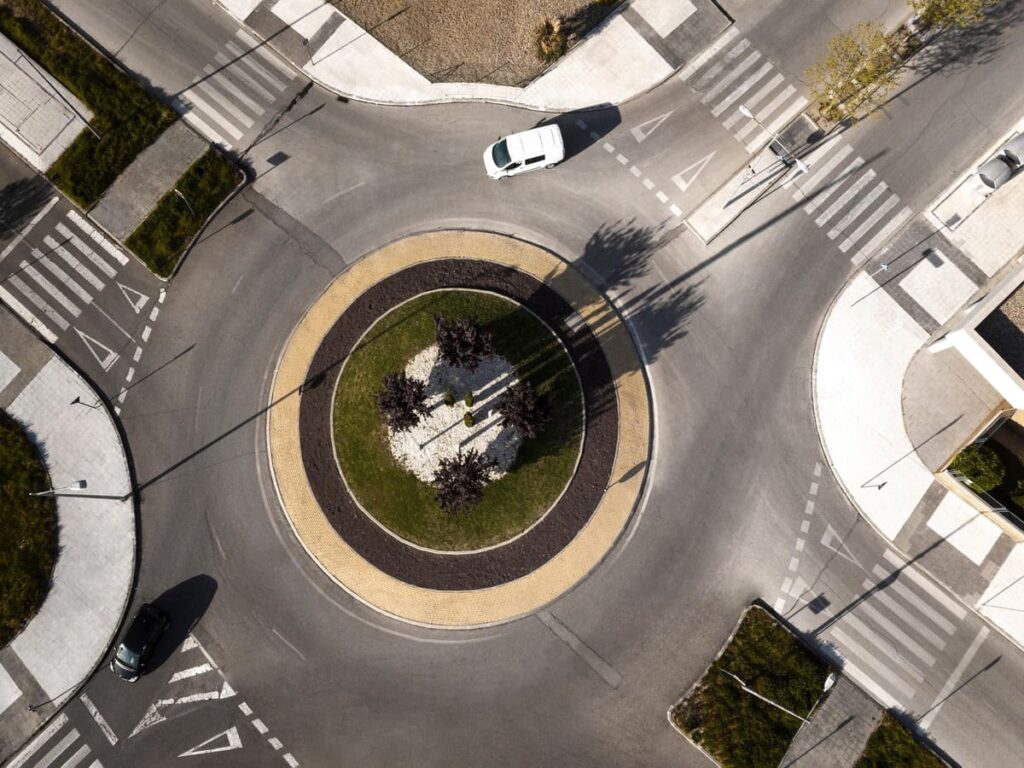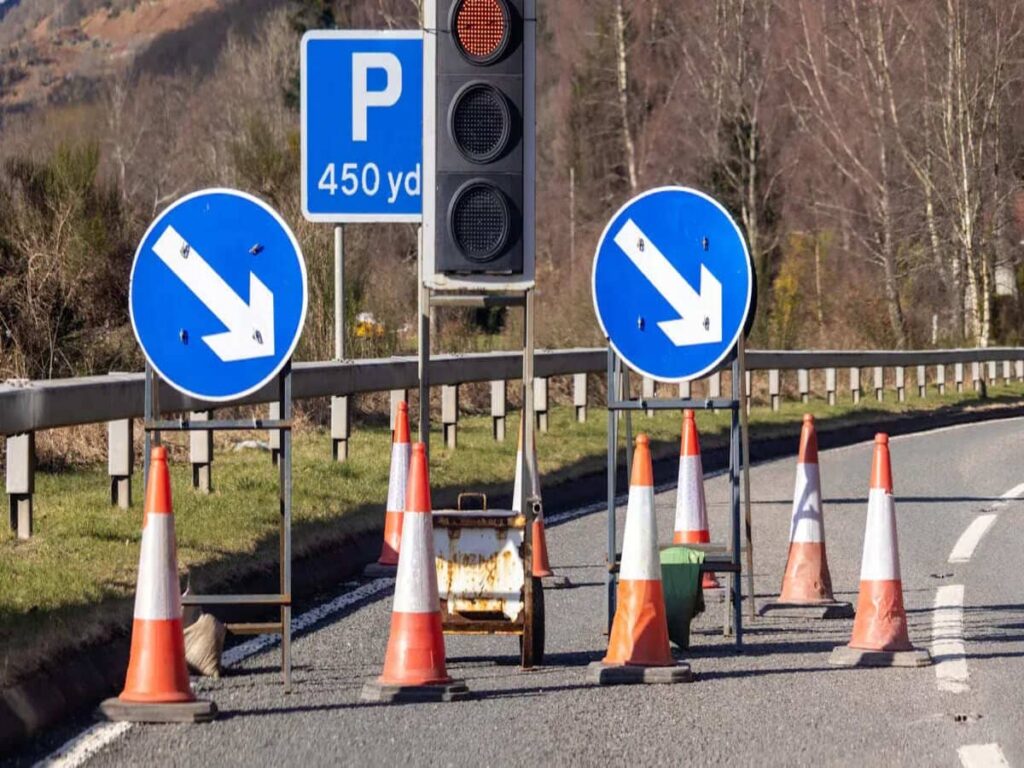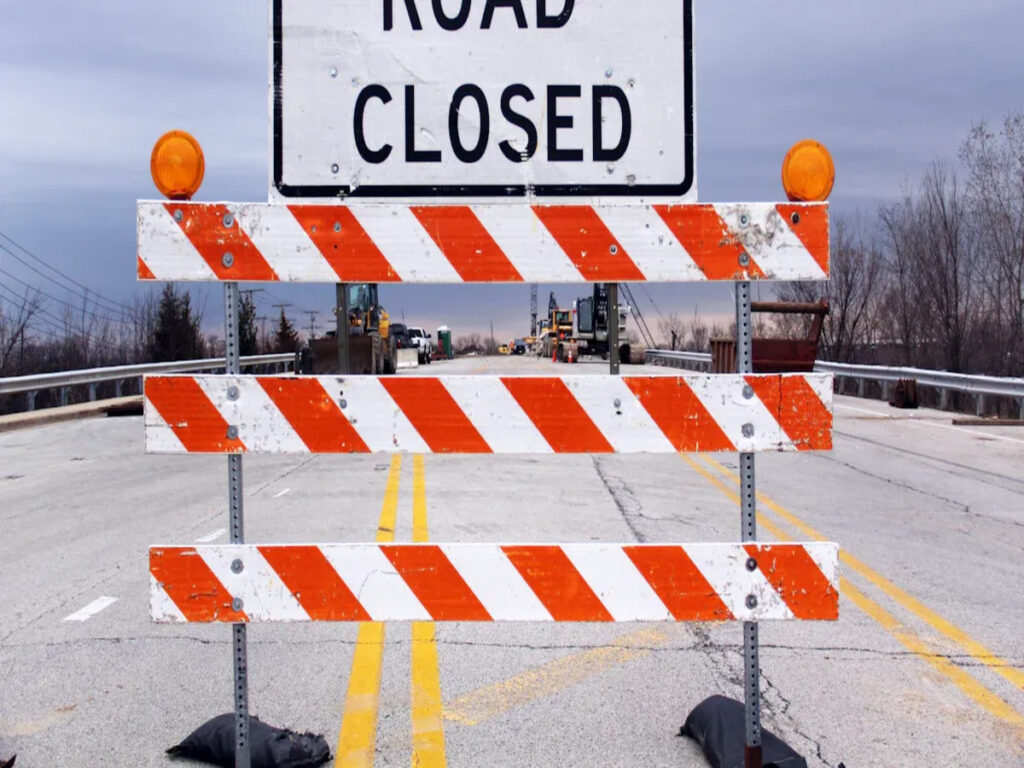
Le barricate del traffico sono importanti barricate di sicurezza sulle strade e nei cantieri. Queste barricate di sicurezza aiutano a guidare il traffico e proteggere i lavoratori. Gli studi dimostrano che l'uso di più barricate di sicurezza abbassa le lesioni e le morti. 89% degli appaltatori dicono che ci sono meno incidenti quando vengono utilizzate queste barriere. Devi scegliere le barricate giuste per ogni situazione. Tipo I., Ii, e iii barricate danno diversi livelli di visibilità e sicurezza. Pensa sempre alle regole, Materiali, prezzo, e manutenzione quando si acquistano barricate di traffico in vendita. Questo aiuta a garantire che la sicurezza del traffico rimanga forte.
A Optraffic, Offriamo una vasta selezione di alta qualità barricate di traffico, incluso il tipo I, Ii, e III, progettato per soddisfare le tue esigenze specifiche. Le nostre barricate stradali sono costruite per migliorare la sicurezza, migliorare la visibilità, e resistere alle esigenze di strade trafficate e cantieri. Esplora la nostra gamma oggi per garantire che le misure di controllo del traffico siano all'altezza e mantengono tutti al sicuro.
Takeaway chiave
- Le barricate del traffico aiutano a dirigere le auto e proteggono i lavoratori. Mostrano dove si trova il pericolo e aiutano a impedire agli incidenti di accadere.
- Scegli la barricata giusta per il tuo lavoro. Usa il tipo I per piccoli lavori. Usa il tipo II per strade trafficate. Usa il tipo III quando è necessario chiudere una strada. Questo mantiene tutti al sicuro.
- Usa materiali forti come la plastica HDPE o l'acciaio zincato. Assicurati che le barricate abbiano brillante, pannelli lucenti. Questo aiuta le persone a vederli durante il giorno e di notte.
- Segui sempre le regole di sicurezza. Controlla spesso le barricate per assicurarsi che siano in buona forma. Questo aiuta a mantenere l'area di lavoro al sicuro.
- Conservare e prenditi cura delle barricate nel modo giusto. Questo li aiuta a durare più a lungo, risparmia denaro, e mantiene le strade sicure per tutti.
Panoramica delle barricate del traffico
Cosa sono le barricate del traffico?
Vedi barricate di traffico sulle strade e nei cantieri. Queste barricate di sicurezza aiutano a proteggere le persone dal pericolo. Guidano le auto, bici, e camminatori lontano da punti non sicuri. Le barricate del traffico sono disponibili in diverse forme e dimensioni. Alcuni sembrano Sawhorses. Altri hanno grandi pannelli con strisce luminose. Guarda la tabella qui sotto per conoscere i tipi più comuni:
| Tipo di barricata | Descrizione | Uso tipico |
|---|---|---|
| A-frame (Parata) Barricata | SAPE CHE SOWRENDE, Top Rail dipinto | Controllo pedonale, Strade a bassa velocità |
| Tipo I Barricade | Pieghevole, Fogli riflettenti in cima | Deviazioni stradali, facile da spostare |
| Barricata di tipo II | Foglio riflettente in alto e in basso | Traffico più elevato o aree di velocità |
| Barricata di tipo III | Più binari, Tipo più grande | Strade chiuse, Aree ad alta velocità/ad alto traffico |
Gli esperti dicono che una barricata dà un chiaro avvertimento sul pericolo. Ti mostra dove andare per stare al sicuro. Le barricate non fermano le auto come fanno le barriere. Ti aiutano a evitare il pericolo e proteggere i lavoratori.
Le barricate di costruzione di strade possono essere realizzate in legno, acciaio, o plastica. Molti hanno luci lampeggianti in modo da poterle vedere di notte. Questi dispositivi di controllo del traffico sono importanti per la sicurezza. Aiutano a impedire agli incidenti di accadere.
Perché le barricate sono importanti?
Le barricate fanno più delle strade di blocco. Tengono te e gli altri al sicuro in molti modi. Ecco i motivi principali per cui hai bisogno di barricate di sicurezza e barriere del traffico:
- Impedire alle auto di andare in zone di lavoro pericolose o aree di stoccaggio.
- Mantieni i lavoratori, Biker, E gli escursionisti lontano dalle macchine in movimento.
- Corsie separate e aiutare le auto a andare nel modo giusto.
- Proteggi le persone da cose come buchi aperti, Detriti, o macchine pesanti.
Quando si utilizzano barricate di costruzione stradali e altri dispositivi di controllo del traffico, Aiutate a fermare gli incidenti. Le regole federali dicono che devi utilizzare dispositivi di protezione positivi, Come canalizzare le barriere del traffico, Nelle zone di lavoro veloci. Queste barriere tengono i lavoratori lontani dal traffico e rendono tutti più sicuri. Molti incidenti nelle zone di lavoro si verificano perché i conducenti accelerano, distrarsi, o cambiare le corsie rapidamente. Le barricate di sicurezza e le barriere del traffico aiutano a fermare questi problemi. Avvertono i conducenti e producono zone cuscinetti.
Dovresti sempre usare barriere del traffico e barricate di sicurezza nel tuo piano di controllo del traffico. Questo mantiene i lavoratori, conducenti, e gli escursionisti al sicuro dal pericolo. Aiuta anche il traffico a muoversi meglio.
Tipi di barricate del traffico
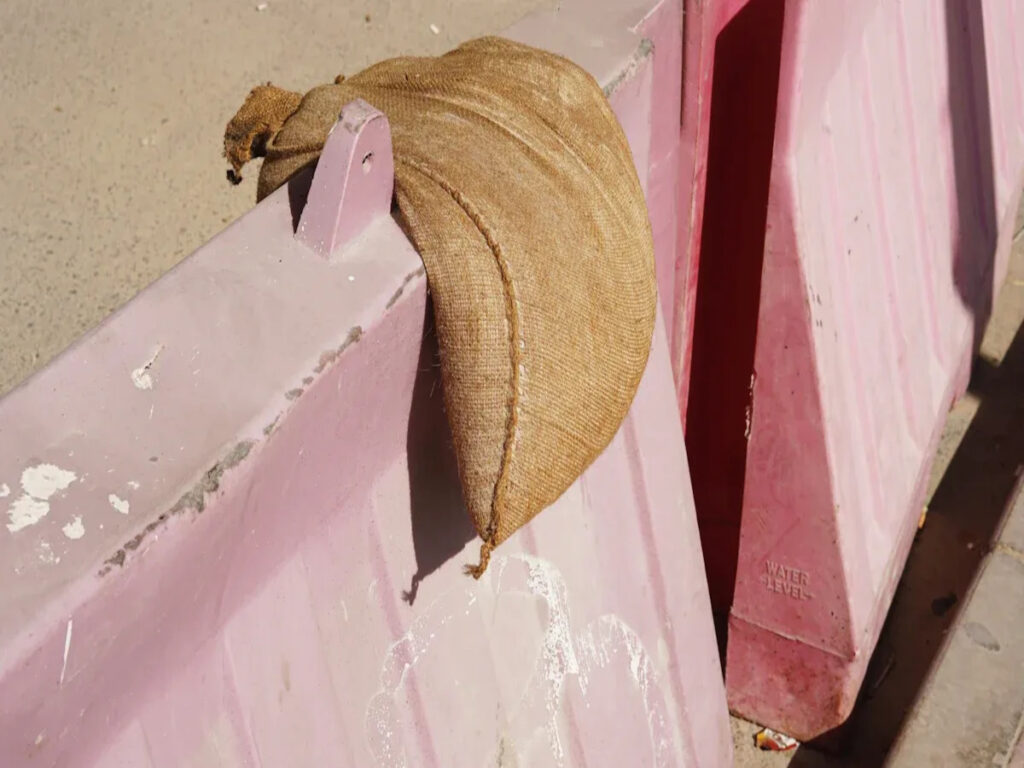
Quando vedi il lavoro su strada, Individirai molti tipi di barricate. Ognuno sembra diverso e ha il suo lavoro. Sapere come sono diversi ti aiuta a scegliere il meglio.
Barricate di tipo I.
Le barricate di tipo I hanno un aspetto semplice. Hanno un binario lucido su ogni lato. Questi possono essere realizzati in plastica, legna, o metallo. Puoi piegarli, Quindi spostarsi e conservazione è facile. La forma A-frame li rende leggeri e veloci da configurare.
Le barricate di tipo I sono buone per lavori brevi e strade lenti. Funzionano per i blocchi del marciapiede, Piccole correzioni stradali, e segnare semplici pericoli. Il pannello singolo lucido aiuta le persone a vederli. Le strisce arancione e bianche si distinguono, Anche quando è buio.
Mancia: Le barricate di tipo I sono le migliori per lavori che non devono essere visti da lontano o necessitano di una forte protezione.
Benefici:
- Facile da spostare e archiviare
- Veloce da montare e abbattere
- Piega se colpito, che aiuta a mantenere le persone al sicuro
Limitazioni:
- Non è così facile da vedere come altri tipi
- Non abbastanza forte per strade veloci o trafficate
- Meglio per auto lente o piccoli lavori
Barricate di tipo II
Le barricate di tipo II sono più facili da vedere e più forti. Hanno due binari lucenti su ogni lato. Questi sono più grandi e più pesanti delle barricate di tipo I. Usano la plastica, legna, o metallo per durare più a lungo. Il pannello extra lucido li fa risaltare di più, Anche di notte o in caso di maltempo.
Le barricate di tipo II sono buone per le strade veloci, autostrade, e luoghi impegnativi. Lavorano per le deviazioni, blocchi di corsia, e luoghi con rigide regole di sicurezza. Puoi ancora piegarli, Ma sono più pesanti e più difficili.
Usi comuni per barricate di tipo II:
- Autostrade e autostrade
- Strade cittadini trafficate
- Zone di lavoro con auto veloci
Benefici:
- Due pannelli lucenti li rendono più facili da vedere
- Più forte e dura più a lungo delle barricate di tipo I
- Soddisfa le esigenze di sicurezza più elevate
Limitazioni:
- Più pesante e occupa più spazio
- Non grande come barricate di tipo III
Barricate di tipo III
Le barricate di tipo III sono grandi e molto forti. Hanno tre binari brillanti, Quindi sono i più facili da vedere. Questi possono essere realizzati in plastica, legna, o acciaio. I frame sono duri e possono gestire il maltempo e i dossi. Alcuni sono realizzati in plastica leggera, Quindi puoi ancora spostarli.
Le barricate di tipo III sono le migliori per chiudere le strade, deviazioni, e lunghi lavori. Coprono l'intera corsia e tengono le auto lontano dal pericolo. È possibile aggiungere luci di avvertimento o sacchi di sabbia per renderli più sicuri.
Caratteristiche chiave delle barricate di tipo III:
- Tre grandi pannelli lucenti per la migliore visibilità
- Cornici forti per un uso lungo
- Soddisfa tutte le regole di sicurezza
Benefici:
- Più facile da vedere, giorno o notte
- Molto forte e affidabile
- Ottimo per grandi lavori stradali e blocchi stradali
Limitazioni:
- Più grande e più pesante di altri tipi
- Ha bisogno di più lavoro per impostare e conservare
Ecco un tavolo per aiutarti a confrontare le caratteristiche principali di queste barricate:
| Caratteristica | Tipo I Barricade | Barricata di tipo II | Barricata di tipo III |
|---|---|---|---|
| Pannelli riflettenti | Pannello riflettente singolo | Due binari riflessivi | Tre pannelli riflettenti |
| Progetto | Frame A pieghevole, leggero | Frame A più grande, più pesante | Frame robusto, Copre la larghezza della corsia completa |
| Pieghevole | SÌ, si piega facilmente | SÌ, piega ma più pesante | NO, non pieghevole |
| Materiali | Plastica, legna, metallo | Plastica, legna, metallo | Plastica, legna, acciaio |
| Uso tipico | Marciapiedi, Piccolo lavoro stradale | Autostrade, strade trafficate | Chiusure stradali, progetti a lungo termine |
| Portabilità | Molto portatile | Portatile ma più pesante | Portatile ma grande e pesante |
Nota: Scegli sempre la barricata che si adatta al tuo lavoro. La barricata giusta mantiene le persone al sicuro e il traffico in movimento.
Barricate di traffico in vendita: Caratteristiche chiave
Materiali e costruzione
Quando acquisti barricate di traffico, Vuoi che siano forti. I migliori usano la plastica HDPE. Questa plastica è dura e leggera. Non si rompe se un'auto la colpisce. La plastica HDPE non arrugginirà o perderà il suo colore. Non devi dipingerlo di nuovo. Alcune barricate usano l'acciaio zincato. Questo metallo non arruggini nella pioggia. Rimane forte per molto tempo. Alcune barricate più vecchie usano compensato e gambe in acciaio. Questi sono robusti e facili da vedere.
- Plastica HDPE stabilizzata UV: difficile, leggero, E difficile da rompere
- Acciaio zincato: non arruggini e dura a lungo
- Compensato con gambe in acciaio: forte e facile da vedere
Mancia: Scegli barricate di acciaio HDPE o zincati per i migliori risultati e il più lungo uso.
Fogli e visibilità riflettenti
I conducenti devono vedere le barricate di sicurezza in ogni momento. Il foglio riflettente aiuta i conducenti a individuarli di notte. Il miglior foglio utilizza tecnologia micropismatica o di vetro. Il foglio di grado diamantato è il più luminoso. Funziona bene con tempo buio o piovoso. Anche i fogli prismatici ad alta intensità sono molto luminosi. Fa bene per la maggior parte delle strade. I colori arancioni brillanti aiutano le barriere del traffico a distinguere.
| Tipo di foglio riflettente | Livello di luminosità | Miglior caso d'uso |
|---|---|---|
| Grado ingegnere | Moderare | Strade lenti, aree meno impegnate |
| Alta intensità | Alto | Strade e autostrade trafficate |
| Grado di diamanti | Più alto | Strade veloci, zone importanti |
Nota: Assicurati che le tue barricate soddisfino le regole MUTCD e ASTM per la riflettività.
Durata e manutenzione
Vuoi che le tue barricate durino con un brutto tempo e un sacco di utilizzo. La plastica HDPE e l'acciaio zincato non arrugginiscono o si rotta. Continuano a sembrare luminosi e funzionano bene per anni. Controlla spesso le barricate per crepe o parti mancanti. Pulirli e sostituire i fogli sbiaditi. Conservali in un luogo asciutto quando non in uso. Questo li aiuta a durare più a lungo e mantiene la tua area di lavoro al sicuro.
- Controlla spesso le barricate per crepe o pezzi mancanti
- Pannelli riflettenti puliti in modo che rimangono luminosi
- Conservare le barriere lontano dalla pioggia e dalla neve
Mantenere le tue barricate in buona forma significa strade più sicure e meno incidenti.
Scegliere barricate di controllo del traffico
Requisiti del progetto
Dovresti scegliere barricate di controllo del traffico che si adattano al tuo progetto. Ogni lavoro non è lo stesso. Alcuni progetti hanno bisogno di forti barriere per le autostrade. Altri hanno bisogno di barricate più leggere per marciapiedi o eventi. Pensa a queste cose quando scegli:
- Seguire Regole OSHA Per mantenere il tuo sito sicuro e abbassare i rischi.
- Scegli il giusto tipo di barricata per il tuo lavoro. Il tipo III è utile per chiudere le corsie e soddisfa le regole MUTCD. Le barricate O-Frame aiutano a controllare le persone che camminano e fanno deviazioni rapide. Le barricate A-frame lavorano per la folla e la marcatura delle aree di lavoro.
- Usa le barricate per guidare le auto, Fermare gli incidenti, e mantenere le persone al sicuro.
- Scegli le barricate che corrispondono alle esigenze di sicurezza del tuo progetto.
Lavori diversi necessitano di diversi dispositivi di controllo del traffico. Per esempio, Le barricate A-frame sono leggere e facili da muoversi. Sono buoni per piccoli lavori stradali e deviazioni pedonali. Le barricate piene di acqua sono forti e funzionano per lavori grandi o lunghi. Le barricate di controllo della folla aiutano con grandi gruppi agli eventi. Pensa sempre a quali pericoli sono sul tuo sito e come proteggere le persone.
Conformità e regolamenti
È necessario seguire tutte le regole di sicurezza quando si imposta le barricate. Queste regole possono cambiare per paese o regione. La tabella seguente mostra alcuni standard importanti:
| Aspetto di conformità | Dettagli |
|---|---|
| Standard nazionali | NCHRP, FHWA (NOI.) |
| Standard internazionali | Iso, IN |
| Regolamenti specifici dello stato | Le regole locali possono differire |
| Best practice del settore | Segui le norme di progettazione e configurazione |
| Regolamenti ambientali | Usa riciclabile, Materiali a basso contenuto di carbonio |
| Conformità tecnologica | Usa funzionalità intelligenti come Luci a LED e sensori |
La maggior parte dei posti vuole che tu usi barricate che si incontrano MUTCD o regole simili. Queste regole aiutano a mantenere i lavoratori e il pubblico al sicuro dal pericolo. Alcuni lavori potrebbero aver bisogno di funzionalità intelligenti, come luci di avvertimento o sensori, Per seguire le nuove leggi sulla sicurezza. Controlla sempre le ultime regole prima di acquistare o affittare le apparecchiature di controllo del traffico.
Considerazioni sui costi
Dovresti bilanciare il costo, sicurezza, E quanto durano le barricate. Le barricate più economiche non sono sempre le migliori. Le barricate economiche possono rompere rapidamente o non soddisfare le regole di sicurezza. Ciò significa che potresti aver bisogno di sostituirli di più e potresti essere multato. L'acquisto di buone barricate di controllo del traffico risparmia denaro nel tempo.
| Tipo di barricata | Descrizione | Implicazione dei costi |
|---|---|---|
| Plastica | Leggero, resistente alla corrosione | Buono per a breve termine, grandi progetti |
| Legna | Durevole, tradizionale | Meglio per progetti di durata moderata |
| Metallo | Di lunga durata, alta durata | Costo iniziale più elevato, Meglio per l'uso a lungo termine |
| Pieno d'acqua | Stabile quando riempito, facile da muoversi vuoto | Affordabile controllo del traffico temporaneo |
Puoi risparmiare denaro acquistando molte barricate per grandi lavori. Molti venditori offrono sconti e offerte di spedizione per grandi ordini. Pensa sempre a quanto dureranno le tue barricate e quanta cura hanno bisogno. Questo ti aiuta a ottenere il miglior valore e protegge il tuo sito.
Altre barricate per il controllo del traffico
Barricate pedonali
Vedi barricate pedonali in eventi e marciapiedi impegnati. Queste barricate aiutano a mantenere le persone al sicuro e controllano le folle. Le barricate pedonali si concentrano sulla sicurezza e sul movimento facile. Hanno gambe e parti del treppiede che possono girare, Quindi l'installazione è veloce. Queste barricate sono leggere, Quindi puoi muoverli e conservarli facilmente. Puoi usarli per fare passerelle sicure o bloccare i punti non sicuri. Le barricate pedonali non hanno bisogno di strumenti pesanti da installare. Mostrano alle persone dove camminare e aiutare a fermare gli incidenti in luoghi affollati.
Barricate A-frame
Le barricate A-frame hanno due gambe a forma di A e una tavola in cima. Usano pannelli lucenti per catturare gli occhi dei conducenti. Puoi usare barricate a frame A per la folla, Contrassegnare spazi sicuri, o bloccare piccole zone di lavoro. Sono leggeri e piegati, Quindi spostarli è semplice. Le barricate A-frame lavorano per le persone che camminano e le auto lente. Non fermano le auto come grandi barriere, Ma avvertono le persone e aiutano a organizzare punti occupati.
Barricate piene di acqua
Barricate piene di acqua sono un modo intelligente per controllare il traffico e proteggere le aree di lavoro. Puoi spostarli facilmente quando sono vuoti. Riempili con acqua sul sito per renderli stabili. Le barricate piene di acqua prendono colpi meglio del cemento, che mantiene i lavoratori e i conducenti più sicuri. Puoi usarli alle uscite dell'autostrada, parcheggi, o siti di costruzione. Queste barricate possono essere nuovamente utilizzate e risparmiare denaro. Sono luminosi, Quindi i conducenti li vedono da lontano. Puoi aggiungere luci o segni per una maggiore sicurezza. Il loro design ti consente di cambiare la forma per soddisfare le tue esigenze.
Mancia: Le barricate piene di acqua utilizzano materiali che possono essere riciclati, Quindi sono buoni per l'ambiente.
Barricate di acciaio e cemento
Le barricate di acciaio e cemento danno la protezione più forte. Li vedi sulle autostrade, ponti, o strade trafficate. Possono impedire a macchine e camion di andare in aree non sicure. Barriere in acciaio durano a lungo e non essere danneggiato dal tempo. Barriere di cemento, Piace Barriere della maglia, sono pesanti e non si muovono facilmente. Li usi per bloccare grandi aree o proteggere i lavoratori dalle auto. Queste barriere sono difficili da muovere, Ma danno più sicurezza per i lunghi lavori.
| Tipo di barricata | Miglior caso d'uso | Caratteristiche chiave |
|---|---|---|
| Barricate pedonali | Eventi, marciapiedi, Controllo della folla | Leggero, portatile, ADA conforme |
| Barricate A-frame | Piccole zone di lavoro, Controllo della folla | Pieghevole, riflessivo, facile da spostare |
| Barricate piene di acqua | Autostrade, parcheggi, costruzione | Assorbimento di impatto, riutilizzabile, modulare |
| Barricate di acciaio/cemento | Autostrade, ponti, zone a lungo termine | Pesante, stabile, di lunga durata |
Suggerimenti per l'installazione e la manutenzione
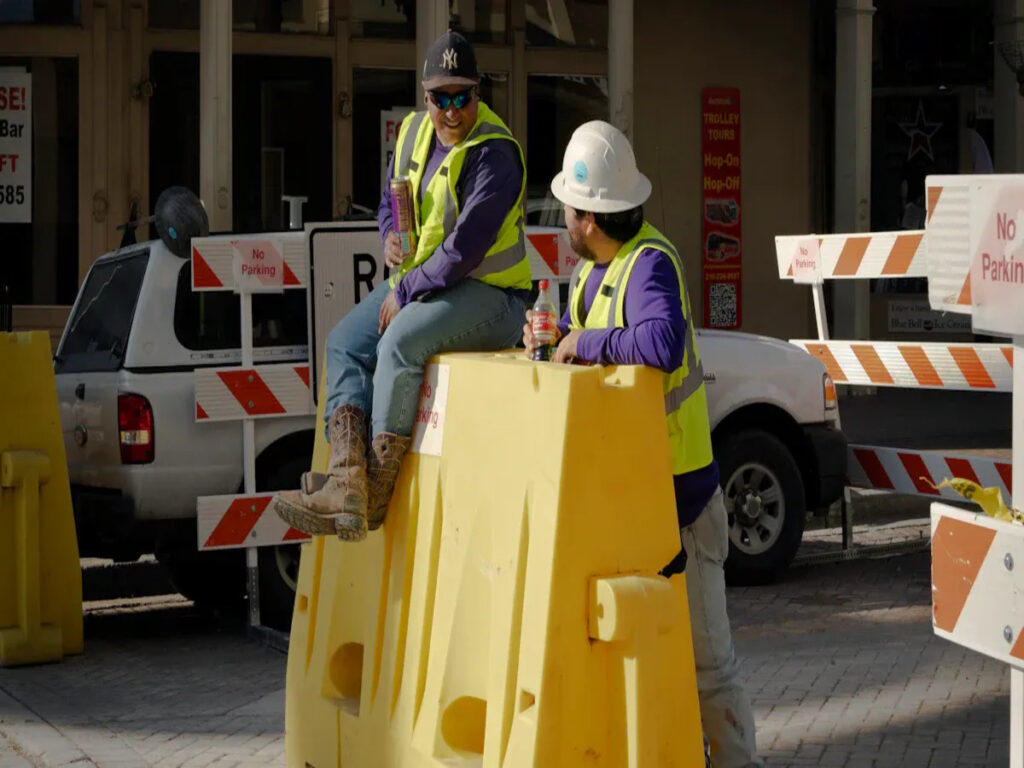
Configurazione e posizionamento
Vuoi impostare barricate nel modo giusto per proteggere tutti. Inizia pianificando il tuo sito. Guarda l'area e decidi dove è necessario posizionare ogni barricata. Assicurati di avere abbastanza lavoratori e strumenti giusti. Usa carrelli elevatori o sollevatori speciali se è necessario spostare barricate pesanti come barriere di cemento. Controlla sempre ogni barricata per danni prima di spostarlo.
Segui questi passaggi per un posizionamento sicuro:
- Pianifica la configurazione controllando il sito e mappando le rotte del traffico.
- Usa l'attrezzatura giusta per sollevare e spostare pesanti barricate.
- Ispezionare ogni barricata prima di sollevare per assicurarsi che non sia danneggiato.
- Sollevare lentamente e mantenere la barricata stabile.
- Assicurarsi barricate con cinghie o catene durante il trasporto.
- Posizionare barricate su un terreno piatto ed evitare le piste quando possibile.
Mancia: Barricate spaziali in base all'area. Per le autostrade, Tienili 20-30 piedi di distanza. Nelle zone della città, utilizzo 10-15 piedi. Per passerelle, 5-10 I piedi funziona meglio.
Ispezione e manutenzione
Devi controllare le barricate spesso per farle funzionare bene. Cerca crepe, ammaccature, o pannelli riflettenti sbiaditi. Pulire lo sporco e i detriti in modo che i conducenti possano vederli chiaramente. Prendere l'abitudine di controllare le barricate ogni giorno se sono in uso.
- Verificare danni o parti mancanti.
- Superfici pulite e pannelli riflettenti.
- Lubrificare eventuali parti mobili se necessario.
- Conservare un registro di tutte le ispezioni e le riparazioni.
Pianifica un'ispezione più profonda ogni pochi mesi. Porta un professionista una volta all'anno per controllare tutte le parti e sostituire qualsiasi cosa usurata. Questo mantiene le tue barricate sicure e affidabili.
Archiviazione e longevità
La conservazione corretta aiuta le barricate a durare più a lungo. Conservali in un asciutto, luogo coperto quando non in uso. Impilarli ordinatamente per evitare di piegarsi o rompere. Tienili lontani dalla luce solare diretta per evitare lo sbiadimento.
Nota: Pulisci barricate prima di conservarle. Questo impedisce allo sporco di causare danni nel tempo.
Se segui questi suggerimenti, Le tue barricate rimarranno forti e pronte per ogni progetto. Cure regolari significa che spendi meno per i sostituti e mantieni le zone di lavoro al sicuro.
Quando scegli le giuste barricate di traffico in vendita, Aiutate a mantenere le strade al sicuro. Assicurati che il tipo di barricata si adatti al progetto e segui tutte le regole di sicurezza. Controlla spesso le tue barricate e conservale nel modo giusto. Questo ti aiuta a trovare danni in anticipo e ferma gli incidenti. Prendersi cura delle tue barricate li fa durare più a lungo. Queste azioni proteggono i tuoi soldi e mantengono le persone al sicuro per molto tempo. Usa questa guida ogni volta che acquisti barricate di traffico in vendita in modo da fare scelte buone e sicure.
Domande frequenti
Qual è la differenza tra una barricata e una barriera?
Una barricata aiuta a mettere in guardia le persone sul pericolo. Non impedisce alle auto di muoversi. Una barriera blocca le auto dall'andare in determinati luoghi. Le barricate sono per guidare il traffico. Le barriere danno una forte protezione.
Come fai a sapere quale tipo di barricata utilizzare?
Scegli la barricata che si adatta al tuo lavoro. Usa il tipo I per piccoli lavori o strade lenti. Il tipo II funziona meglio per le strade trafficate. Il tipo III è buono per le chiusure stradali o le autostrade. Controlla sempre le regole locali prima di scegliere.
Quante volte dovresti ispezionare le barricate del traffico?
Controlla le barricate ogni giorno quando vengono utilizzate. Cerca crepe, pezzi mancanti, o pannelli sbiaditi. Pulirli spesso per mantenerli luminosi. Fai un controllo più profondo ogni pochi mesi per tenerli al sicuro.
Puoi riutilizzare le barricate del traffico per diversi progetti?
La maggior parte delle barricate del traffico possono essere nuovamente utilizzate. Pulisci e controllali prima di ogni utilizzo. Conservali in un luogo asciutto in modo che durano più a lungo. Riutilizzo le barricate risparmia denaro e aiuta il pianeta.
Le barricate del traffico devono soddisfare qualsiasi standard di sicurezza?
SÌ, Le barricate del traffico devono seguire le regole di sicurezza come MUTCD negli Stati Uniti. Queste regole dicono quale dimensione, colore, e la riflettività di cui hanno bisogno. Assicurati sempre che le tue barricate soddisfino le regole di sicurezza locali e nazionali.

